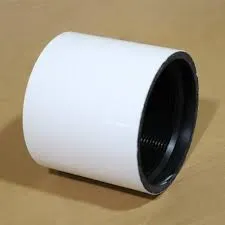- Afrikaans
- Albanian
- Amharic
- Arabic
- Armenian
- Azerbaijani
- Basque
- Belarusian
- Bengali
- Bosnian
- Bulgarian
- Catalan
- Cebuano
- Corsican
- Croatian
- Czech
- Danish
- Dutch
- English
- Esperanto
- Estonian
- Finnish
- French
- Frisian
- Galician
- Georgian
- German
- Greek
- Gujarati
- Haitian Creole
- hausa
- hawaiian
- Hebrew
- Hindi
- Miao
- Hungarian
- Icelandic
- igbo
- Indonesian
- irish
- Italian
- Japanese
- Javanese
- Kannada
- kazakh
- Khmer
- Rwandese
- Korean
- Kurdish
- Kyrgyz
- Lao
- Latin
- Latvian
- Lithuanian
- Luxembourgish
- Macedonian
- Malgashi
- Malay
- Malayalam
- Maltese
- Maori
- Marathi
- Mongolian
- Myanmar
- Nepali
- Norwegian
- Norwegian
- Occitan
- Pashto
- Persian
- Polish
- Portuguese
- Punjabi
- Romanian
- Russian
- Samoan
- Scottish Gaelic
- Serbian
- Sesotho
- Shona
- Sindhi
- Sinhala
- Slovak
- Slovenian
- Somali
- Spanish
- Sundanese
- Swahili
- Swedish
- Tagalog
- Tajik
- Tamil
- Tatar
- Telugu
- Thai
- Turkish
- Turkmen
- Ukrainian
- Urdu
- Uighur
- Uzbek
- Vietnamese
- Welsh
- Bantu
- Yiddish
- Yoruba
- Zulu
Casing and Tubing Connections
Casing and Tubing Connections in Oil and Gas Industry
Casing and tubing are critical components of oil and gas drilling operations, serving as barriers that protect the wellbore and facilitate the extraction of hydrocarbons. Understanding the connections between these components is essential for ensuring the integrity of the well and the efficiency of production processes.
Casing refers to the series of pipes that are inserted into a well after drilling to provide structural support and prevent the collapse of the wellbore. It also isolates the various underground formations, ensuring that fluids do not migrate between them. The casing is typically made of steel and is available in various sizes and grades, depending on the depth and conditions of the well. The connections between casing sections are known as casing couplings, which are welded or threaded together to create a continuous barrier.
Tubing, on the other hand, is the pipe through which oil or gas is produced from the well. It is inserted inside the casing and is designed to withstand the pressure and corrosive nature of hydrocarbons. Tube connections are critical because they must be reliable to ensure that the production flow is uninterrupted. These connections can be made using various methods, including threaded joints, flanged connections, and welded joints.
casing and tubing connections

One of the challenges in casing and tubing connections is ensuring a proper seal to prevent leaks
. Advanced technologies, such as sealing materials and special threading techniques, are used to enhance the strength and durability of these connections. Furthermore, regular inspection and maintenance are crucial to detect any signs of wear or failure, such as corrosion or fatigue, which can lead to costly leaks or accidents.Another important aspect is the selection of materials for casing and tubing connections. Factors like temperature, pressure, and the presence of corrosive substances dictate the choice of alloys used. Selecting the right material can greatly enhance the lifespan and reliability of the connections.
In summary, casing and tubing connections are fundamental to the safe and efficient operation of oil and gas wells. Their integrity not only impacts the productivity of the well but also ensures the safety of the drilling operations. Continuous advancements in materials and connection technologies play a vital role in addressing the challenges faced in the industry's ever-evolving landscape. As exploration and extraction activities expand into more complex environments, the importance of robust casing and tubing connections will only increase, underscoring their critical role in resource extraction.
-
Tubing Pup Joints: Essential Components for Oil and Gas OperationsNewsJul.10,2025
-
Pup Joints: Essential Components for Reliable Drilling OperationsNewsJul.10,2025
-
Pipe Couplings: Connecting Your World EfficientlyNewsJul.10,2025
-
Mastering Oilfield Operations with Quality Tubing and CasingNewsJul.10,2025
-
High-Quality Casing Couplings for Every NeedNewsJul.10,2025
-
Boost Your Drilling Efficiency with Premium Crossover Tools & Seating NipplesNewsJul.10,2025







